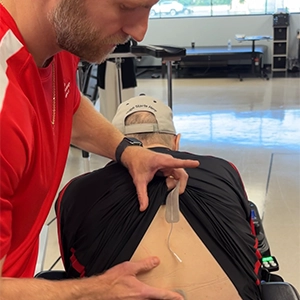At The Recovery Project, we’re continually looking to implement the latest evidence-based treatment approaches to help our patients maximize their neurological recovery and overall health — and the FES Specialty Center at TRP helps do just that.
Functional electrical stimulation (FES) treatment techniques help aid in motor recovery from many central nervous system disorders by using highly specialized equipment to administer pulses of electrical current to patients through adhesive pads. This evokes coordinated muscle contractions that imitate muscle functionality and gives patients the health-related benefits of exercise.






